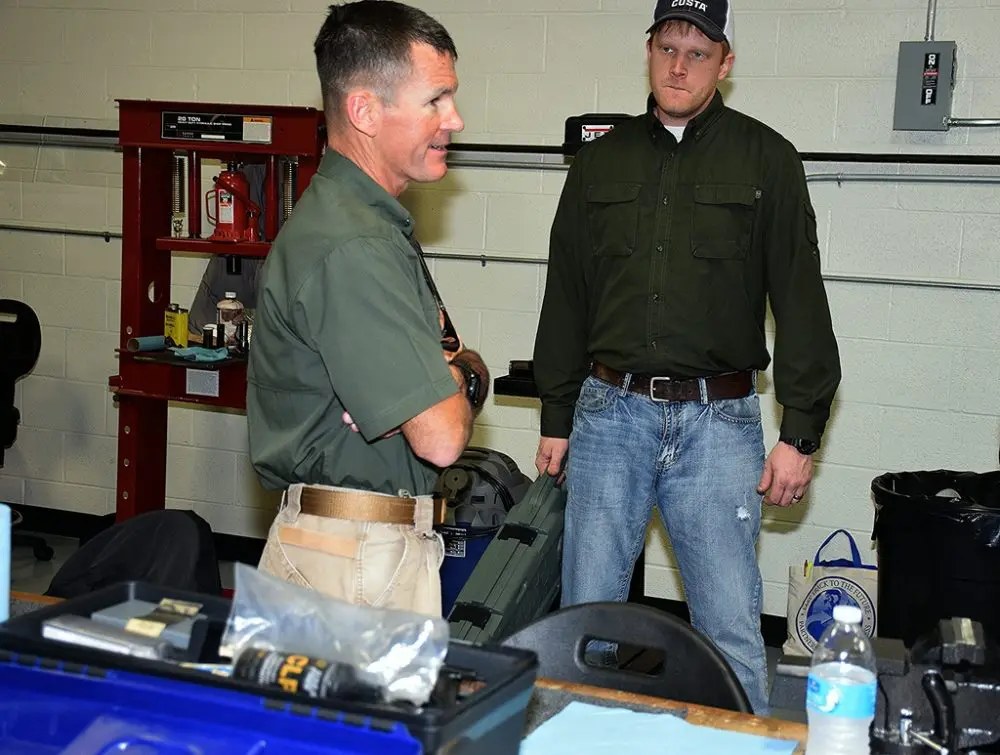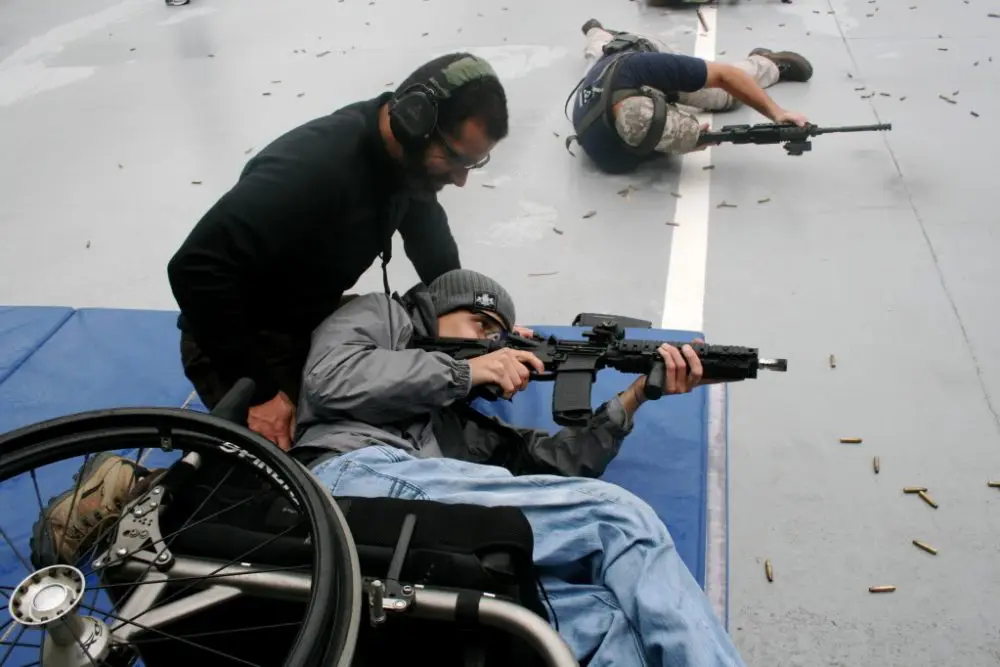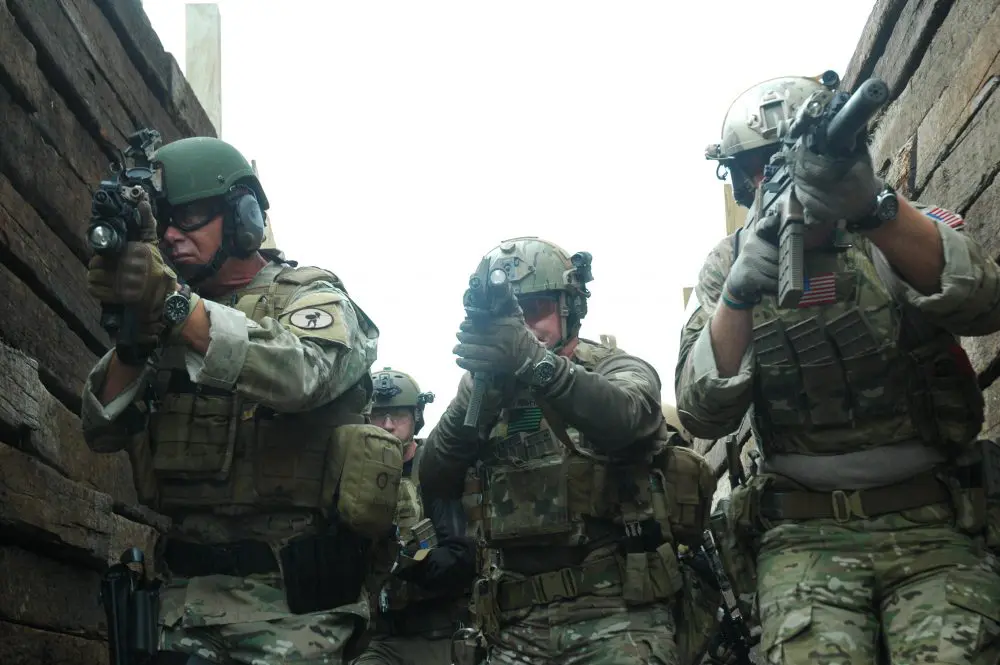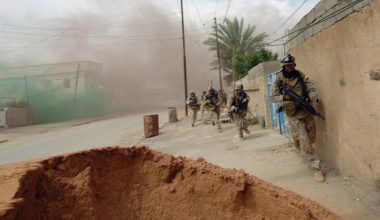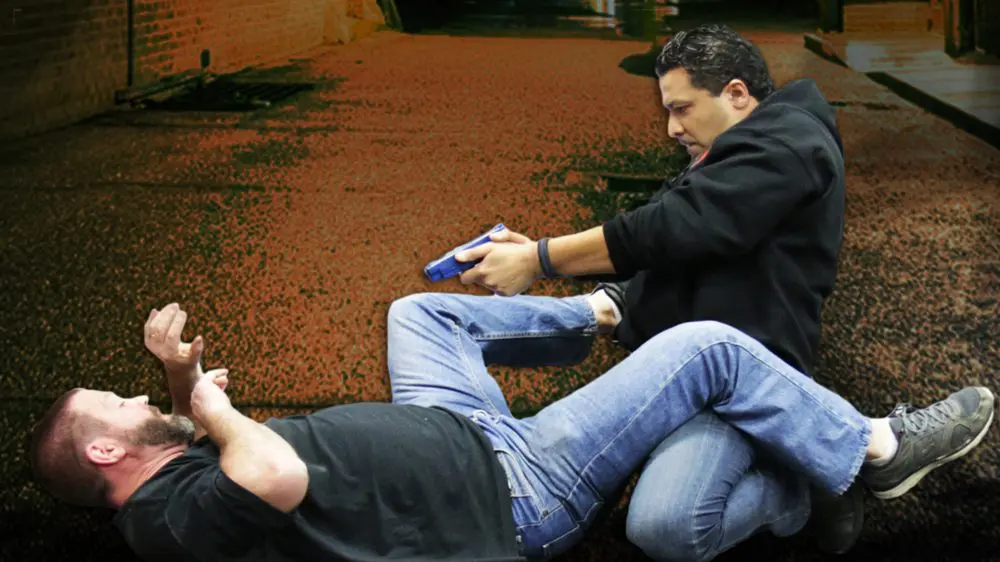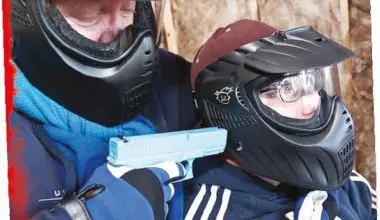Most shooters underrate the importance the right target has in effective training and skill progression. As I travel and visit different areas, I like to see what shooters and units are using. Plenty of great options are on the market, but one of the most commonly seen in well-developed training programs is the NRA “B8” 25-yard pistol bull.
In my own personal training, I’ve begun to use this classic more and more, almost to the exclusion of other targets. This is remarkable only if you know how much I disdained the “Standard American Pistol Target” (as it was originally called) in the late 1990s and early 2000s.
I have increasingly found that, like many classics, the B8 is omnipresent for a reason—in fact, a number of good reasons. Let’s take a few in turn.
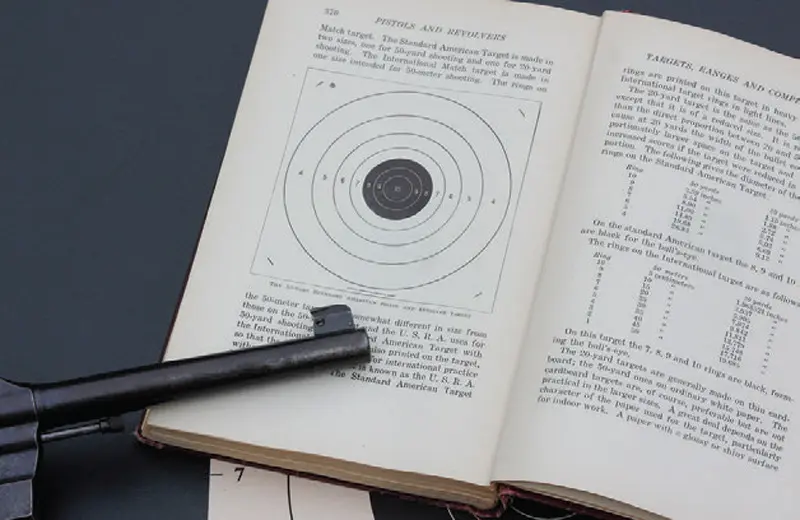
Table of Contents
BALANCE
Any target serves two purposes: aiming point and scoring zone. The B8 does very well in both roles, something that is not necessarily common in targetry. The B8 seems to have been around forever, but my research puts its debut in the mid 1880s, when it was modified from the 200-yard target in use for the Trapdoor Springfield rifle. That’s only a decade after the introduction of the self-contained metallic cartridge in service revolvers.
As formal target shooting emerged, distances for competitions settled on 25 yards for outdoor matches. Using the primitive sights of the period, the 5½-inch bull was visible while allowing a distinct aiming point at this distance. Today, a sharp-eyed shooter with modern target sights shooting in good light can usually refine down to about a three-inch target at 25 yards while maintaining a strong front-sight focus.
But with the addition of average vision, variable light, and service-style sights, the B8 still works well and allows the shooter to easily maintain alignment and accurately place the shots. The early pistols were capable of surprisingly good accuracy, with many capable of a little more than two inches at the 25-yard mark with their blackpowder loads.
The roughly 3.3-inch full-credit ten ring ensured that the target asked no more than what the guns were capable of. (In short order, crack shots were maxing the course, so the competition added the 50-yard slow-fire phase to separate the field with an identically sized target that extended the aiming black to the eight-inch eight ring, or the B6 in today’s nomenclature.)
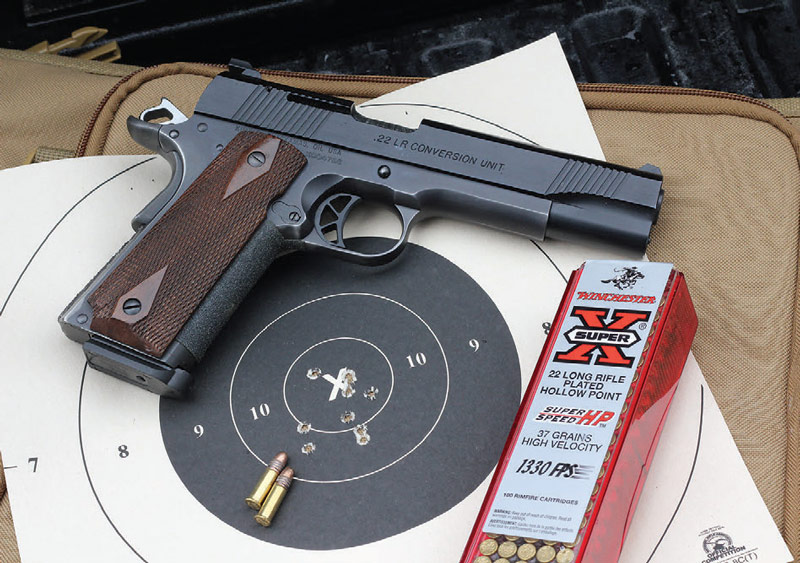
While today’s custom guns are often marketed with accuracy guarantees down to one inch at 25 yards, the average combo of service auto and issue JHP ammo probably still hovers in the three-inch/25-yard bracket across large samples. This means that the Standard American Pistol Target still maintains relevance in the sense that a shooter’s weapon “should” be able to put the rounds in the ten ring.
By the 1920s, courses of fire had long settled into a timed-fire stage of five shots in 20 seconds and a rapid-fire stage of five shots in ten seconds. In the single-handed, single-action manner these were conducted (revolvers were dominant), that was cooking along pretty well. A variant of this is one of my favorite accuracy drills today.
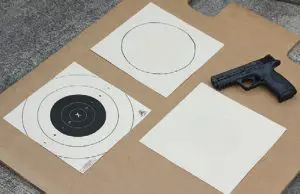
Drill: Tuf/Ruf
Starting from the ready, the shooter engages a B8 at 25 yards using a normal two-handed stance with five rounds in 20 seconds (Timed Fire). Reload as necessary and then re-engage upon the start signal with five rounds in ten seconds (Rapid Fire). The goalpost is all rounds within the black.
The Timed Fire/Rapid Fire combo is an outstanding and quick measurement of where a shooter’s accuracy ability is with a given handgun. The time provided is generous enough that a shooter should be able to make the hits, but forces him to track the pistol and rapidly work a clean trigger press while staying on the front sight. It can be an addictive drill.
Shooters can quickly see progress on this drill, shrinking their goals and impacts in succession from all ten on the 10×10-inch target center, to all ten in the eight-inch ring, and ultimately all in the black. For overachievers, the gauntlet is down for a perfect 100. The Tuf/Ruf works equally well as a carbine drill conducted at 50 yards.
Maintaining all shots within the 5½-inch aiming black serves as a great challenge for most shooters and neatly corresponds to a tight representation of the vital organs as well as the head from frontal angles. This analogous sizing allows the B8 to shift from aiming point at 25 yards to scoring zone in closer drills. It is a tighter standard than the more commonly seen eight inch and drives a focus on accuracy and the mechanics that get you there. The next drill steps up the tempo to take the hard focus on tracking the sights and smooth trigger manipulation into a more practical distance.
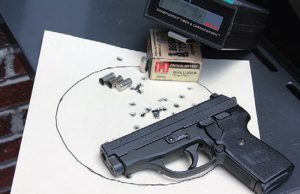
Drill: The Test
Starting from the ready, the shooter engages a B8 from ten yards with ten rounds in ten seconds. The marker is 90 scored by the rings. Attributed to Ken Hackathorn, The Test is popular with a variety of trainers and programs and has innumerable minor variations. The moderate speed and distance with the tight accuracy required challenge many shooters. It’s a great teaching drill that forces the shooter who gets by at seven yards and in with coarse sight alignment and trigger work to knuckle down and control the gun smoothly.
The shooter who can post high 90s on The Test with time left on the clock is probably good to go in just about any scenario.
The sub-caliber version of The Test for rimfires is ten rounds in nine seconds with the goal being a perfect 100. This compensates for the diminished recoil and forces an even greater awareness of the connection between sight alignment and smooth trigger break. The shooter who cleans the subcal version is almost certainly seeing his front sight lift and return into the notch in an almost continuous “video reel.”
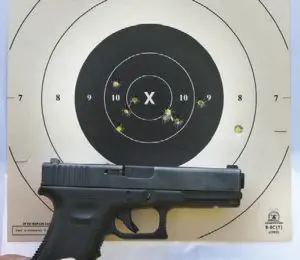
VERSATILITY
One reason the venerable Standard American target has kicked most other targets out of my range bag is its versatility.
Sure, most drills I use and have developed work with the B8. But I often use the repair center in two completely different ways. If you flop the B8 to its reverse side and hold it up to the light, you can just see the eight ring. Take a marker and trace it lightly. Now the B8 is a repair center for an IDPA target or a “mini silhouette.” I use the reversed eight-inch circle for classic drills like the Bill Drill and El Presidente.
As great as the B8 bull is for a reduced zone and distant aiming point, the black and scoring rings can be distracting and slow the shooter unnecessarily when the objective is speed to the all-angles/center-mass eight-inch standard. The unobstructed center allows the shooter to track the sights without distraction. It’s great for training speed at closer distances, and the ten-inch repair center keeps the shooter better focused within the eight-inch zone than when shooting a full-size silhouette.
The reversed repair center is a faster and more economical way to keep silhouettes fairly clean than pasting holes or replacing the entire target. I often forgo the silhouette entirely and just use the reversed target with scribed circle as a stand-in with a normal target backer.
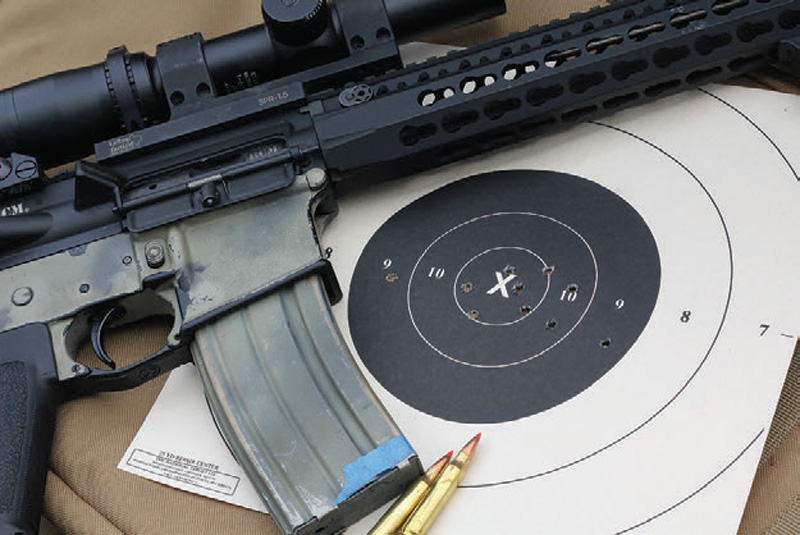
The other method is to use a reversed center as a ten-inch square target. I use this in one of two ways. First, as an even coarser level of accuracy for long range, aggressively shooting on the move, or pushing max speed to wide multiple targets. These are areas that many trainers use 12×24-inch “C” zone steel or full silhouettes for.
I prefer the tighter ten-inch square that matches up pretty closely to a hard armor plate, which is usually about 10×12. This gives a good representation of a generous frontal shot that could still have good effect. As a bonus, B8 centers are much easier to pack to the range than large silhouette paper or cardboard targets.
For some standard scored drills, shooters may find they perform better on the reversed B8. For example, my better scores on the ten-shot qual (TEN-SHOT QUAL: Budget Shooting Performance Test, January 2014 S.W.A.T.) have all been with the plain side facing out. The plain square is easy enough to hold center on without getting overly fixed onto the bull. Shooters who are prone to the snatchies may see a distinct increase by going inside out and scoring the backside upon completion.
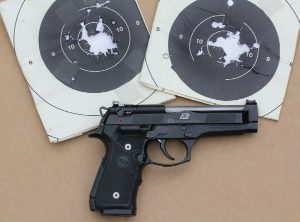
MUSKETRY
The Standard American Pistol Target is also an ideal carbine training tool. The bull is sized perfectly to be a visible, precise aiming point at 100 yards for aperture sights such as the M4 style, as well as red dot sights (RDS). The four minute-of-angle dot on an Aimpoint T1 fits neatly inside the black with just enough excess to gain tight alignment, while the smaller dots on other RDS are clearly visibly centered.
Shooters are often shocked at the level of precision that can be achieved by irons or dots shooting on a well-proportioned target. The roughly 5.2-inch bull is a solid marker for precision efforts at 100 yards, and the 3.1-inch ten ring within the capabilities of most service guns. Much like the RuF/TuF, a good shooter “should” be able to hold the bull for all shots from a barricade or prone at 100 yards, but the devil is in the actual doing of it. The bull corresponds well to the expected precision as distance and points of contact decrease, the basis of the next drill.
Drill: 100-Yard Aggregate
Shooter engages B8 with ten rounds from the carbine in 60 seconds each from prone at 100 yards, sitting at 75, kneeling at 50, and standing at 25. Nirvana is 40 shots in the black.
The 100-yard agg is attributed to certain units, was popularized by Viking Tactics, and is widely used in numerous training programs. Several variations exist, one of the more common being a pressure cooker that drops the time to 30 seconds per string.
Some score the drill by the rings and others by hits in the black. As in the pistol drills, there is a progression from all hits within the eight ring to all in the black, with a sizable chunk of rifle shooters stuck between the two levels of achievement.
NEAT TRICKS
The B8 has a few bennies for the rifle shooter. The first is in zeroing. When zeroing at 100 yards, the iron-sighted M4 shooter seeking the popular 200-meter zero can hold securely at six o’clock and walk away happy when the group settles into the bottom edge of the “X” ring. For a red-dot-equipped carbine, the shooter can hold center and put the turret caps back on when the group hugs the top edge of the ten ring.
Second is in establishing mechanical offset. At seven yards and in, the AR shooter can hold at 12 o’clock on the bull to strike the X ring, the 2.75-inch radius of the target matching the offset for many optics. This comes in handy for a number of drills.
I used to purposely avoid the B8 target, thinking it wasn’t “tactical” enough. I couldn’t understand why it was such a staple in so many programs, suspecting mindless tradition. I preferred silhouettes and myriad other targets.
I still believe silhouettes, photo targets, mannequin targets, and others have real and important roles in a thorough training program. But I have come to appreciate what a classic the original pistol target is and why it is the standard in so many high-end programs. For overall versatility and skill development, the Standard American B8 is hard to beat.
